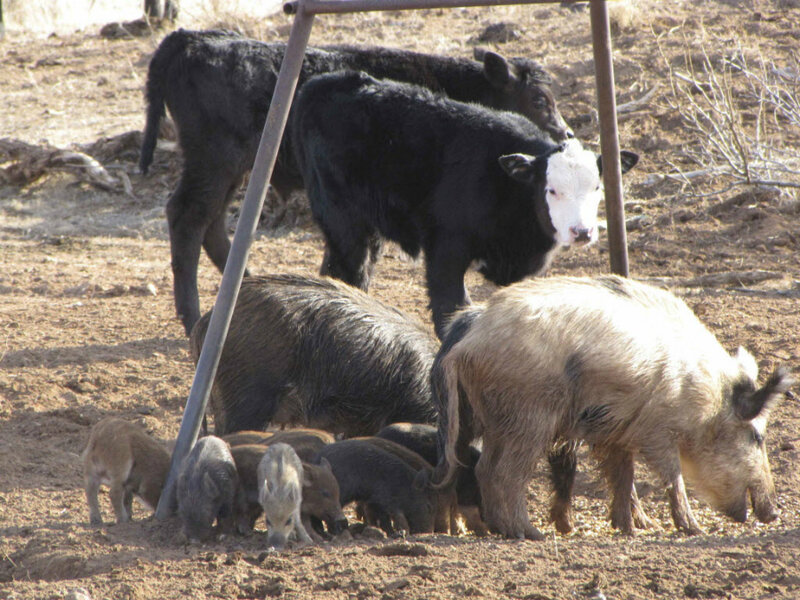Parks service plan to use satellites to track feral pigs
Loading...
Officials released a plan to use satellites to track feral hogs that have been wreaking havoc in two national parks in East Tennessee. The fast-breeding, non-native species was introduced in the early 1900s in the Great Smoky Mountains National Park and Big South Fork National River Recreation.
The World Conservation Union found feral pigs are among the most destructive invasive species, largely because of their high reproductive potential and their influence on the environment.
The hogs in Tennessee are a hybrid of the European wild boar, and feral swine of purely domestic ancestry. Wildlife biologists say they attack native wildlife, disrupting ecosystems and spreading disease. Due to their omnivorous diet, the pigs can disrupt large segments of the food chain. Efforts to control the population through hunting and trapping have been less than successful. Since 1959, the NPS has killed an estimated 13,200 feral hogs in the national parks.
Limited information on their movements has also been a problem, according to the National Park Service (NPS). Wildlife biologists in Tennessee plan to use 20 GPS collars to track their movements, a technology similar to that which is used to study bears, according to the Knoxville News Sentinel.
The expansion of the feral hog population began hundreds of years ago in the United States. According to the NPS, the hogs were first entered the wild population in east Tennessee in the 1920s.
Park officials and researchers have implemented multiple strategies to control the feral hogs, with limited success.
“Wild hogs are the most prolific large animal in North America,” Bill Stiver, a wildlife biologist, told the Sentinel. “They can breed at six months of age and have two litters a year, each with three to eight piglets. Eradication would be our desire, but given the park’s acreage and our staff and funding limitations, we’re doing our best to mitigate the damage.
The problem is not unique to Tennessee. Hunting is often used for population control and can reduce the number of feral hogs by up to 23 percent, according to one study, but those results fluctuate by region.
Despite the measure, feral hog populations are expanding in the United States, and biologists are developing new strategies to control populations, the NPS said.
The latest effort in Tennessee, will track selected hogs around the clock, to lend a better understanding of its populations.
The spread of a viral disease among feral pigs called pseudorabies has added new urgency to understanding feral hogs in Tennessee because it could affect the domestic pig populations. The decision to use the collars follows similar efforts in North Carolina, which began a satellite-tracking program last year, the Sentinel reported.
Illegal movement of semi-domesticated pigs has elevated the spread of the disease, Stiver said, adding the collars would have a better idea of how the disease moves across the region.
“The illegal movement of pigs is not isolated to this area,” he told the Sentinel. “It’s a national problem. We think that’s how the disease got here in the first place.
We’re making a difference. There’s been a downward trend in the hog population in recent years based on the modeling. You don’t see hogs rooting in the front lawn of the visitor centers anymore.”





